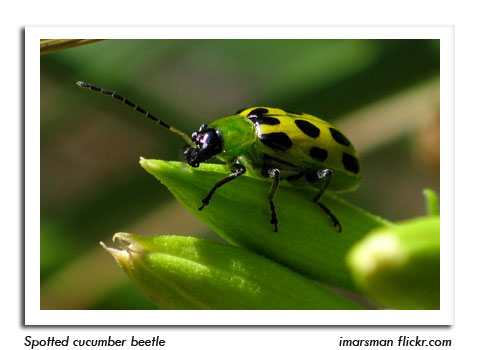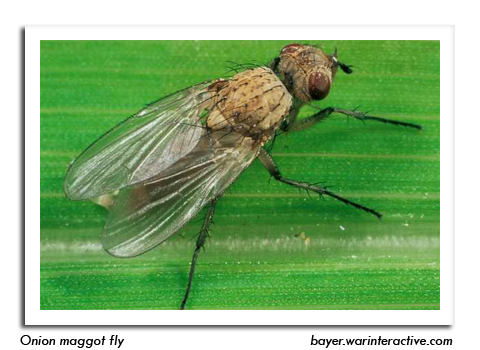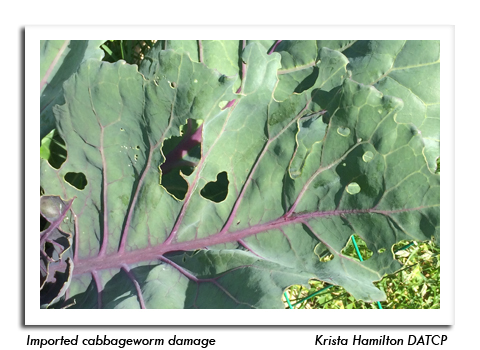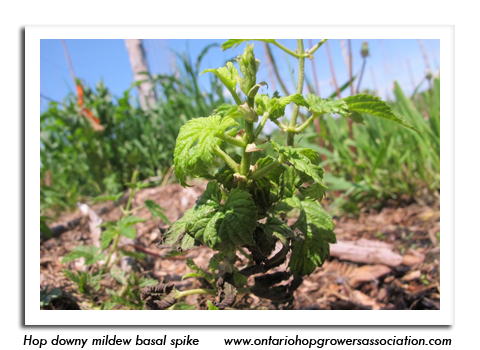
 |
|
|
Vegetables
Volume 59 Number 5 Date 05/29/2014 SPOTTED CUCUMBER BEETLE - Migrants were collected in Iowa, Lafayette and Vernon County alfalfa late last week. These distinctive yellowish-green beetles with black spots do not overwinter in Wisconsin, but arrive around early June on storms fronts originating in the southern United States. Both the spotted species and the striped cucumber beetle are efficient vectors of bacterial wilt of cucumbers, muskmelons and watermelons. The first sign of bacterial wilt on cucumber and melon is a distinct flagging of lateral and individual leaves. ONION MAGGOT - Emergence of first generation flies continued across south-central and southwestern Wisconsin. Peak emergence is anticipated in the Eau Claire, Fond du Lac and Hancock areas next week, following the accumulation of 680 degree days (base 40°F). Flies of this spring generation are usually the most abundant and damaging, especially at sites where onions are grown in succession. Preventative soil insecticides should be considered if maggot damage to the last season's crop exceeded 5-10%. Home gardeners are advised to rotate this year's onion plantings as far as possible from last year's to reduce the probability of damage. IMPORTED CABBAGEWORM - Larvae are emerging in areas of the state where 300 degree days (simple base 50°F) have been surpassed. Cabbageworms chew large, irregular holes in leaves, bore into heads, and drop brown fecal pellets that contaminate the marketed product. Cole crops can tolerate considerable defoliation at the thinning or transplanting stages, but frequent sampling is recommended to assess populations and to avoid insecticide treatments that disrupt biological control. The biological insecticide, Bacillus thuringiensis (Bt) is very effective against early-instar caterpillars and is an organically acceptable form of control for infestations affecting 30% or more of plants during the transplant to cupping stages. HOP DOWNY MILDEW - This hops disease has been verified by the UW-Madison Plant Pathology Department in Dane and Portage counties, representing the first confirmed cases in Wisconsin this year. The causal agent is a fungus-like microorganism that overwinters in infected buds and crowns. Early signs are characteristic diseased shoots emerging from the crown, called "basal spikes". The spikes are stunted and chlorotic, with downward-curled leaves. Later symptoms include necrosis or browning of leaves from the ground up and angular lesions on leaf surfaces with gray mycelial growth on the leaf undersides. Hops growers may submit samples suspected of being infected with hops downy mildew for diagnosis to: Amanda Gevens, 1630 Linden Dr. Rm. 689, Plant Pathology Dept., University of Wisconsin, Madison, WI 53706 -- Krista Hamilton, DATCP Entomologist 




|
|
|